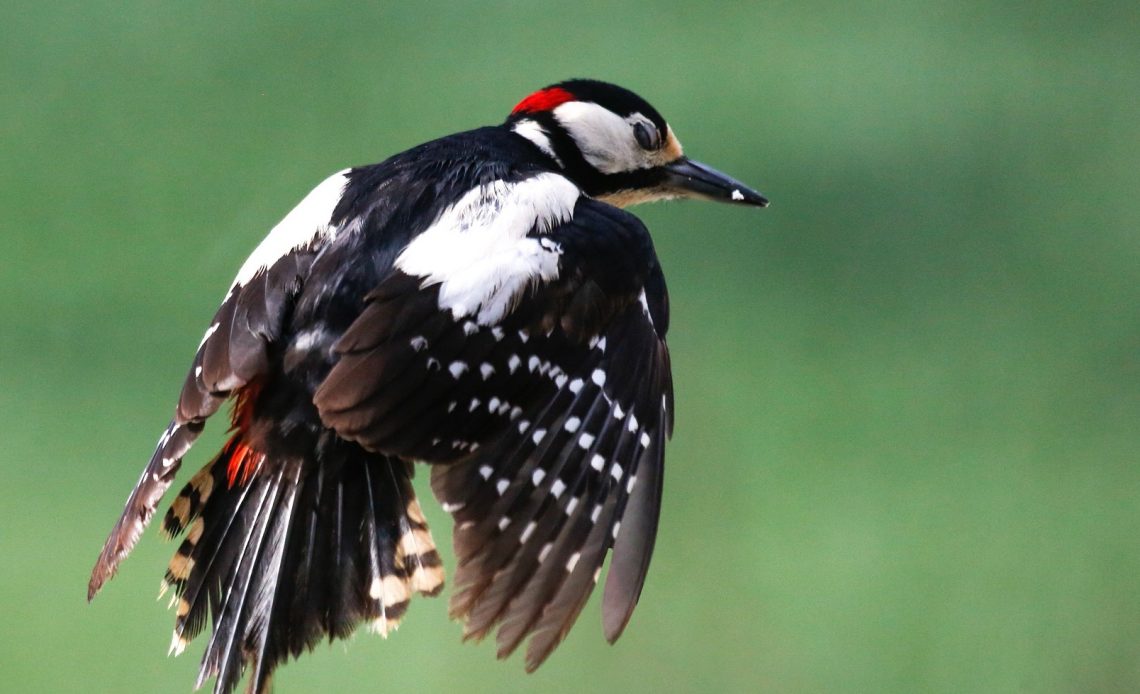

We’re here to help! Wild Yards is a completely free website that is 100% dedicated to helping you create a wildlife-friendly, sustainable yard. Read more
WildYards is reader-supported. When you buy a product through a link on our site, we may earn a comission. Every product is independently selected by our (obsessive) editors and our reviews are unbiased and objective. Read more about our mission or our privacy policy.
With the sheer variety of woodpecker species out there globally, it is expected that they will each have their own particular ways of living! They all have different preferences regarding where they live, what they eat, and how they spend their winters. In fact, do woodpeckers migrate at all? Are you likely to see them in your garden during the colder months?
Some woodpeckers migrate, some don’t! The majority of US native woodpeckers stay home for the winter period. What’s more, we know of around seven woodpecker species that definitely migrate – while the remainder tends to balance.
If you’re setting up your wild yard and want to start attracting woodpeckers this winter, keep reading to find out which ones are likely to be still hanging around.
Which species of woodpeckers migrate?
In North America, around seven species of woodpeckers are known to migrate in the winter months. These are:
- Northern flickers
- Lewis’s woodpeckers
- Yellow-bellied woodpeckers
- Red-headed woodpeckers
- Williamson’s sapsuckers
- Red-naped sapsuckers
- Red-breasted sap-suckers
They often migrate for better food sources, warmer weather, and sometimes for breeding. Some are only short-distance migrators, whereas others travel across countries for their new homes! The truth is, these are the woodpeckers that are most likely to travel far to avoid the deep freeze. There are 22 different woodpecker species in the US right now – meaning that the remainders aren’t always so keen to travel long distances.
Most US native woodpeckers choose to stay put – great news if you’re an avid birdwatcher! What’s more, of the list of birds above, Lewis’s woodpecker has been known to stay home across all the seasons.
Which woodpeckers don’t migrate?
The following woodpeckers native to the US don’t migrate:
- Pileated woodpeckers
- Red-bellied woodpeckers
- Hairy woodpeckers
- Downy woodpeckers
- Black-backed woodpeckers
- Acorn woodpeckers
- Red-cockaded woodpeckers
- American three-toed woodpeckers
- Gila woodpeckers
- White-headed woodpeckers
- Gilded flickers
- Ladder-backed woodpeckers
- Nuttall’s woodpeckers
- Arizona woodpeckers
- Golden-fronted woodpeckers
- Ivory-billed woodpeckers
Some woodpeckers prefer not to move during the winter – however, they may change their nests or hunting grounds for better insulation and better food choices.
That includes US woodpeckers who prefer to change elevation as temperatures change. When discussing migration in American woodpeckers, we refer to those birds that prefer not to travel across the country – some still choose to move a little further north.
Birds that prefer not to migrate make do by fluffing up their feathers and even by shivering! In fact, woodpecker behavior can change a lot over the colder months, which is all the more reason to serve a few woodpecker treats to keep them well-fed and happy as winter sets in.
Woodpeckers aren’t the only birds to choose not to migrate during the winter months. Did you know, for example, that most owls don’t migrate at all? It’s a common misconception that all birds migrate for winter.
How long do woodpeckers stay in the same place?
It’s not easy to say – even those non-migratory woodpeckers listed above have been known to travel occasionally. Various studies suggest that many of these birds, cross-species, have a non-committal strategy for winter migration.
Those woodpeckers who choose to stay in their nests may do so for the whole year, while others will move closer to sunny spots in the same area. Crucially, if you live somewhere that’s likely to see lots of woodpecker activity, it is more likely than not you’ll be hearing their drilling into the new year.
It’s a good idea to clue up on what woodpeckers eat in the winter if you do see a few flutter into your backyard – as their dietary needs and habits change to cope with the change in seasons.
Conclusion
Woodpecker migration habits are truly curious – some are happy to live through the winter at home, while others will be more than willing to go on vacation. If you do find a woodpecker nest, consider yourself very lucky – and make sure your garden is perfect for these birds to head to time and again for winter sustenance.
